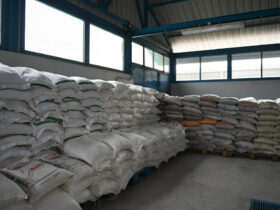I understand that you love the joys of city life. The idea of being a lonely survivalist living at the edges of the civilized world isn’t too appealing for you.
But look closely at the events around the world in the past decade.
From rising natural disasters to a global pandemic, there are plenty of reasons that are genuine causes for concern.
As a prepper, I can see the distinct change as the number of preppers in the US has grown exponentially in the past few years.
And these aren’t people bugged by doomsday theories. They are rational people finding it difficult to depend on government institutions for surviving an SHTF emergency.
So, how close are we to SHTF?
Honestly, there are too many variables to give an exact timeline for an SHTF event. But when we look at the larger picture, we may very well have stepped into uncertain times. In other words, the doomsday clock might already be ticking.
Time to take a closer look and try to find out what awaits us.
How Close Are We To SHTF?
To start with, let’s find out what does SHTF mean?
While the term is the acronym for “shit hits the fan” that preppers use to describe any catastrophic event. Think of nuclear wars, superstorms, pandemics, mega-tsunamis, etc., that can break apart the social structure.
Other than that, it can also refer to a personal disaster. This can mean the loss of a job, an accident, or a critical illness.
In reality, preppers have been subjected to a lot of ridicule and linked with obsessive-compulsive-like symptoms. But with the coronavirus pandemic, that idea has changed.
Here are some facts that will indicate how close we are to an actual disaster.
When you consider such events, it might be apparent that an SHTF disaster can hit us at any time.
Effects of Climate Change
Consider this- in the past 50 years, climate-related disasters have increased by a factor of 5.
Obviously, climate change is playing a big role and the exact impact of the same is still not fully understood. The damage caused by the hurricanes like Irene, Wilma, and Katrina are prime examples of this.
Besides, the rising levels of heat and dryness can also lead to a wildfire crisis on a global scale. A UN report has already stated that the risk from wildfires in the coming years is really high.
It’s as if we are already sitting on a planetary landscape that’s like a tinderbox.
The rapid melting of polar glaciers is also causing a rise in ocean levels. This is a big threat to low-lying coastal belts and islands in the coming decades.
Super Volcanoes
Super Volcanoes are a big threat that can not only cause immense destruction but can also push the planet into a “volcanic winter”. This can result in famine and a rapid decrease in the global population.
Apart from the Yellowstone supervolcano, there are two other active supervolcanoes in the US. They are the Valles Caldera in northern New Mexico and the Long Valley Caldera in California.
Many experts have pointed out that an eruption of the Yellowstone will be an “ultra-catastrophe” that’s unlike anything that humans have seen before.
The Lake Toba Supervolcano in Indonesia is another threat that can’t be ignored. Its last eruption around 75000 years ago was a climate-changing event.
But that’s not all…
Such an eruption can also cause a mega-tsunami that can be devastating for the surrounding countries.
A Solar Storm
While severe solar storms are rare, the effects can be devastating for every person on the planet. A massive solar storm can cause an internet apocalypse and knock out satellite connectivity. In addition, it can cause immense damage to the power grids as well.
That can lead to a breakdown of the social order. Also, there will be large-scale disruptions in communications and the supply chain. Not to forget, the economic impact of such a storm can be disastrous.
The worst part is, we don’t have enough information to understand the full impact of such an event. In other words, we are unprepared.
Soil Degradation
Chances are, this is one threat you haven’t heard about. In reality, the United Nations has mentioned soil degradation as a major threat to humanity.
Imagine the rich and fertile topsoil turning into a barren desert where nothing grows. With agricultural outputs dropping fast, such a world will be destroyed by famines and an unprecedented demand for food.
Decades of deforestation, improper land use, and unsustainable agriculture practices are some of the reasons that soil biodiversity is falling at a rapid rate. Unless we can reverse the change in the coming years, our future is at risk.
Signs Of The End Times
While technology can help in saving lives from global disasters, it can’t help us avoid them completely. Besides, it might be too late to reverse the effects of something as massive as climate change.
Here are some signs that can point out that the end times are much nearer than you think.
- In the past decade, around 20 million people have been driven out of their homes per year due to climate change.
- In 2020, the rise in global sea levels reached 91.3 mm (3.6 inches). This was a record amount when compared to the 1993 levels. This has also increased the rates of high tide flooding.
- Climate change and lack of food crops have caused several droughts in the East African nations of Ethiopia, Somalia, and Kenya in the past decade. Millions of people faced acute food and water shortages.
- More than 18 million hectares of land were burnt down due to the bushfires in Australia in the 2019-2020 season. Apart from a serious effect on public health the fires also caused huge economic and ecological losses.
- Climate change can also increase the risk of pandemics and a new pandemic can begin anywhere, anytime.
The First Steps To Take When SHTF
Be it an SHTF disaster or a TEOTWAWKI (The End Of The World As We Know It), preparation is the key to staying alive.
To be honest, even when you’re prepared, it won’t be easy. But with the right plan and supplies, you will have an edge over the others struggling for survival.
Here are the first steps you need to take during an SHTF scenario.
- Collect all available information about the situation. Know that there will be rumors floating around. So, get in touch with the right people to understand what is going on. Communicate with your loved ones to discuss the scenario.
- Depending on the assessment of the situation you need to decide if it’s best to bug in or bug out. You may have your bug-out bag ready but at times, bugging in is the best option. Or else you might have to head to a shelter in case of nuclear fallout. Choose the way that offers the best chance of survival.
- Gather all your family members at home to ensure their safety. During an emergency even returning home from work, or getting the children out of school can be a challenging task.
- If you have decided to hunker down, collect the last-minute supplies and then secure your shelter. In case of a wildfire or a flood, you will have to bug out. Make your move fast to prevent getting caught up in traffic.
How to Plan and Prepare
The idea of prepping when hit with a disaster can seem overwhelming. But with the right general survival planning and preparation, it’s not so hard at all.
- The first step is to prepare a plan that will outline how you will meet an emergency. Consider the threats you might be facing and decide how you can counter them. Also, make a note of your strengths and weaknesses. Lastly, plan for an emergency shelter.
- Prepare a comprehensive gear list based on the various items you will need to execute the plan. Decide what items will be packed in the bug-out bag and which ones should be stored in the emergency shelter.
- If you’re bugging out, think about the logistics and the restocking of supplies. Firstly you need an evacuation vehicle to travel to your shelter. Next, you need a plan for restocking the essential items like water, fuel, and food for long-term survival. Also, plan for a power supply to run the basic appliances.,
- The next step is to secure and shelter and be prepared for self-defense. This might depend on the type of emergency you’re facing. But you need to stay prepared for survival.
Why Is Prepping Pointless?
Naysayers might say that prepping is pointless and it’s not based on rational concerns.
And that’s not entirely wrong.
In such scenarios, the limited resources of the government will not keep you alive. You need to depend on your abilities and intelligence to ride out the disaster
So, when you have the “survivalist mentality” and know how to act responsibly, prepping can help you and your family to survive
In short, prepping isn’t pointless. It’s all about- hoping for the best and preparing for the worst.
While you can’t prep for every eventuality, doing nothing isn’t an option.
In fact, when you think of the insurance policies you have purchased, you’re already a prepper.
Final Thoughts
The world is a crazy place. On top of that, human social systems are extremely fragile.
So, how close are we to SHTF?
When you think about it, we might already be in such a scenario. It’s just that, it’s playing out slower than you expected.
And it may not be a single event. Who knows, what else might hit next. Remember that it’s not always about doomsday prophecies and ridiculous meteorological scenarios. Sometimes what’s causing the shit to hit the fan could be right under your nose.






